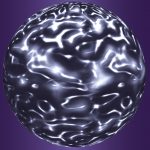Link to Pubmed [PMID] – 22325598
Methods Cell Biol. 2012;108:73-92
Activated cell surface receptors are rapidly removed from the plasma membrane through clathrin mediated endocytosis and transported to the endosome where they are either recycled or sorted to the lysosomal pathway to be degraded. Receptors, destined for degradation in the lysosome, are packaged into intraluminal vesicles (ILVs) of endosomes by a reaction that is topologically unrelated to other budding reactions in cells. First, receptors are clustered at the endosomal membrane and receptor-rich membrane patches then bud towards the lumen of the endosome. The nascent membrane buds are finally cleaved from the limiting membrane to release cargo-bearing vesicles into the endosomal interior. The molecular machinery that drives multivesicular body biogenesis, the endosomal sorting complex required for transport (ESCRT) machinery, has been identified through genetic screens. It consists of the cytoplasmic, hetero-multimeric complexes ESCRT-0, -I, -II, and -III, and of the Vps4/VtaI complex. Although the ESCRT machinery has been characterized extensively using cell-biological and biochemical approaches, the molecular mechanism of multivesicular body biogenesis remained unclear. In this chapter, I will present in vitro reconstitution systems that we used to study ESCRT-driven membrane remodeling reactions with purified components on artificial membranes. This includes generation of large and giant unilamellar liposomes, as well as in vitro reconstitution reactions of fluorescently labeled proteins on such membranes. I will discuss both, the potential of in vitro systems to analyze membrane-remodeling events and also their limitations.

